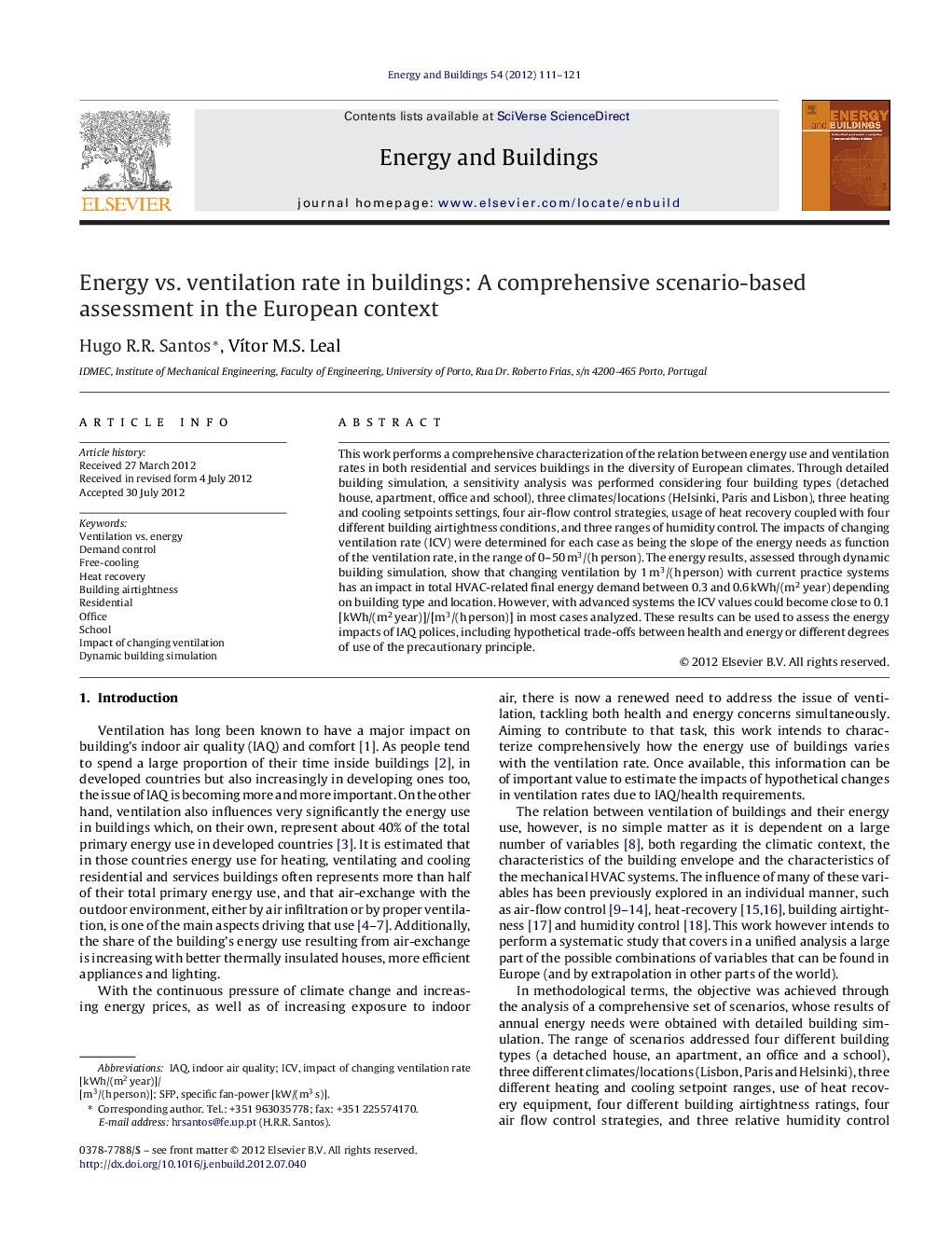| کد مقاله | کد نشریه | سال انتشار | مقاله انگلیسی | نسخه تمام متن |
|---|---|---|---|---|
| 263641 | 504080 | 2012 | 11 صفحه PDF | دانلود رایگان |

This work performs a comprehensive characterization of the relation between energy use and ventilation rates in both residential and services buildings in the diversity of European climates. Through detailed building simulation, a sensitivity analysis was performed considering four building types (detached house, apartment, office and school), three climates/locations (Helsinki, Paris and Lisbon), three heating and cooling setpoints settings, four air-flow control strategies, usage of heat recovery coupled with four different building airtightness conditions, and three ranges of humidity control. The impacts of changing ventilation rate (ICV) were determined for each case as being the slope of the energy needs as function of the ventilation rate, in the range of 0–50 m3/(h person). The energy results, assessed through dynamic building simulation, show that changing ventilation by 1 m3/(h person) with current practice systems has an impact in total HVAC-related final energy demand between 0.3 and 0.6 kWh/(m2 year) depending on building type and location. However, with advanced systems the ICV values could become close to 0.1 [kWh/(m2 year)]/[m3/(h person)] in most cases analyzed. These results can be used to assess the energy impacts of IAQ polices, including hypothetical trade-offs between health and energy or different degrees of use of the precautionary principle.
► A comprehensive analysis is performed on the relation between energy use and ventilation rate in buildings.
► Variables studied: building type, location, HVAC setpoints, heat recovery, airtightness, air flow control.
► The impact of changing ventilation rate (ICV) is presented for 144 cases.
► Heat recovery and demand control are the options that more consistently achieve significant reductions on ICV.
► There is potential for changing ventilation rates without incurring on increased energy use.
Journal: Energy and Buildings - Volume 54, November 2012, Pages 111–121